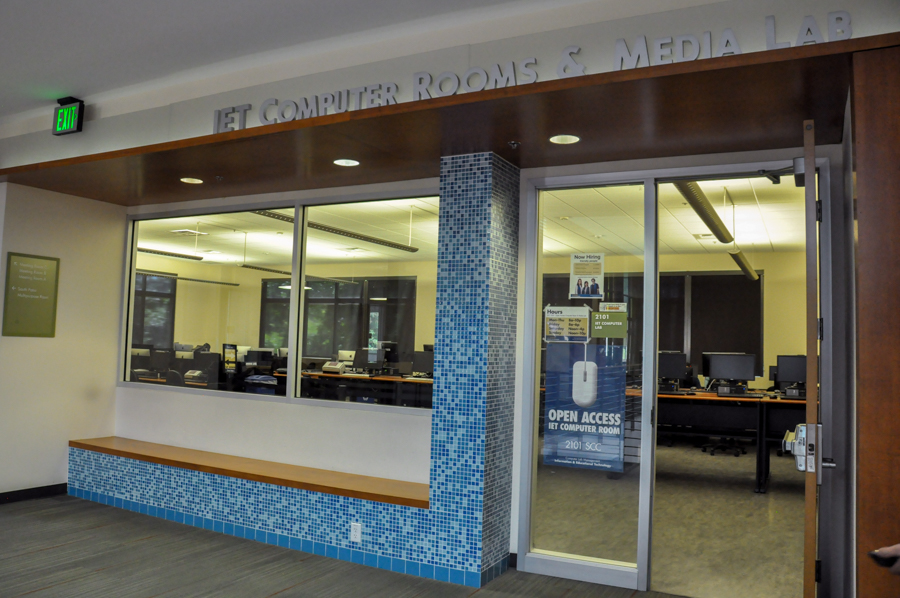
Center to replace Student Community Center’s IET Media Lab
UC Davis has announced plans to open a new Chicana/o and Latina/o Resource Center. The IET Media Lab in the Student Community Center (SCC) will close in spring of 2017 to make space for the center.
“The intention is to be more strategic and intentional to support the retention and graduation of these particular communities,” said Cirilo Cortez, the director of Strategic Chicana/o and Latina/o Retention Initiatives.
Cortez said the center will serve as a hub for academic support for individual groups and communicate with the Dean’s offices and academic advising offices, as well as have a direct line to referrals to address students who are on academic probation and subject to dismissal.
“[It’s a place to] find ways to provide more services, but also be a space for celebrating academic achievement, the stories of our students who are having success,” Cortez said.
Ruben Gil, a fourth-year English major and identity development coordinator at the Student Recruitment and Retention Center, said that the center has some potential, but that there are aspects that need to be addressed.
“I hope that it fills the gap of where all the other programs on this campus don’t seem to impact, particularly the first-year students,” Gil said. “I am afraid that, as hopeful as I want to be about this center, at the moment I just see it as another glorified study hall to appease HSI, [or] Hispanic Serving Institution, requirements.”
HSI is a designation by the federal government given to universities that meet certain requirements in helping facilitate low-income Hispanic students at the university.
Gil said that students have made their requests for the center known, including a change in the center’s planned location.
“We’re trying to have a say in this, we show up to every meeting, we try to voice our opinions and we already said we don’t want it in the [SCC] because we’re taking up space,” Gil said. “As it stands, this center is pretty balanced. We have students of color from all different communities, and to place a Chicano Latino center right on top of everything else, it’s going to bring an influx of folks from my community, which you know I want to retain, but I also want us to show what solidarity looks like and it doesn’t look like us imposing ourselves on a center that’s already so multicultural.”
Martin Giron, a second-year community regional development and Chicana/o studies double major, talked about his concerns for what it will mean to have the center where many students make regular use of the lab.
“I’m very offsided as well on the whole idea of having the center, especially the discussion of the location,” Giron said. “It’s going to be in the SCC where the current computer lab is, where a lot of current students use that center for printing, to do assignments, to just catch up on work and have an accessible computer at hand.”
Cortez said that the center will be open to anyone in the Latin American community, emphasizing diversity in such a large demographic.
“The center will be decorated and be a reflection of the diversity within the Chicano Latino community, not just heavily focusing on Mexican or Aztec culture but more broad to include the Latin Americas,” Cortez said. “It’s going to be very important for the UC system to think about more ways to better serve our community because demographically, we’re already the majority in public education.”
The center is the second in a project to create a space for four specific communities. This past fall, the African Diaspora Center in the South Silo opened, and Student Affairs still plans to create centers for the Native American and Asian Pacific Islander communities.
“We see a disparity of where these centers are located,” Giron said. “The center for African Diaspora is located in the attic of the Silo and ours is implemented in the [SCC], and the center for Native American students is [going to be] all the way next to where the international house is at. We’ve been asking to change the location [for the Chicana/o and Latina/o Resource Center] but nothing has been done.”
Gil said that programs for the Chicano/a center have either been non-specific or have not been geared toward a diverse enough population, including female students and the LGBTQIA community.
“I was part of the collective that formed the Chicano Latino male retention class and I tried inserting intersectionality by way of centering the conversation around gender and sexuality, but that wasn’t centered at all and so the class itself is only focused on heterosexual cis gendered Chicano Latinos,” Gil said. “As of right now, I hate that we still don’t have anything solid of what the center looks like even though it’s been in the talks for at least a year, and so we don’t know what it’s going to look like. All we know is that it’s going to be here in the [SCC] and that administration plans on retaining folks but they don’t listen to what the students have to say at all.”
Giron said that while the center is a good idea, there are still many issues that need to be figured out.
“Don’t get me wrong, I like the idea of having a center but I don’t feel like the center is something that is needed at this very moment. It needs to be talked about more than [in] just one town hall meeting within the community members,” Giron said. “There’s always going to be pros and cons and as student activists, we have to recognize when we’re taking up space and where space is needed.”
Written by: Ivan Valenzuela –campus@theaggie.org



